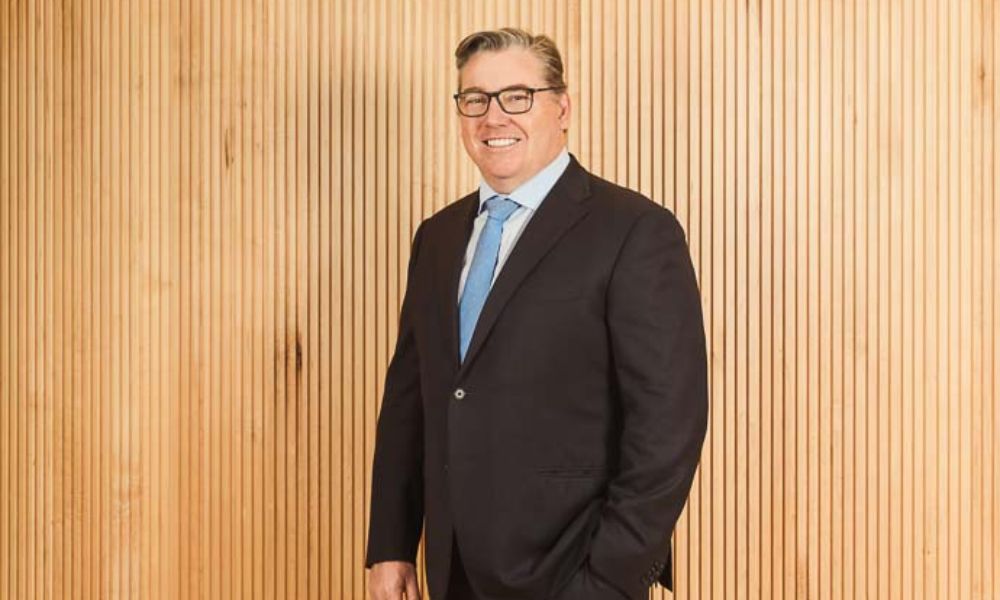What do IAG’s financial results mean for brokers?

What do IAG’s financial results mean for brokers? | Insurance Business Australia
Insurance News
What do IAG’s financial results mean for brokers?
CEO lifts lid on CGU’s broker strategy
Insurance News
By
Daniel Wood
This week, Insurance Australia Group (IAG) released its 2024 full-year financial results. Compared to last year, profits were up for the trans-Tasman giant and reached nearly $900 million. The firm’s intermediated business reported a 50% profit increase to $300 million, comfortably beating its profit target of $250 million.
What does this mean for insurance brokers?
Jarrod Hill (pictured above) is CEO of CGU and WFI, the commercial, intermediated insurance brands of IAG. He said the results show that his firm’s focus on what brokers need, is starting to pay off.
“If we look at probably the last six to 12 months, we’ve been able to start focusing more externally on what our brokers need from us, rather than internally to deliver this underlying insurance margin,” he said.
Hill said an internal focus over the last three years was necessary to get “core fundamentals” heading in the right direction. He said those fundamentals involved “discipline” around underwriting, pricing and claims.
He said the firm had made heavy investments in those areas and is now more careful about selecting risks. Now that the foundations are in place, he said his firm is focusing more externally, including on broking partners.
Claims processes involving brokers are improving
Hill suggested that brokers should already be seeing improvements in the claims area. The CEO said some property claims processes are now more efficient and faster.
“We’ve made some investments in generative AI to support our claims handlers in uplifting the outcomes and speed at which we’re able to settle claims,” said Hill.
He described the results as “very favourable” for what his firm categorises as “simple claims”. These claims are usually under $20,000 with no business interruption (BI) component.
60 days down to 12
“We’ve reduced the average cycle time from 60 to 12 days and we’re getting just under a third of those settled within seven days,” said Hill. “For me, that’s really where the rubber hits the road.”
Hill suggested that claims improvements and “a general uplift in our service proposition” were likely behind a 23-point improvement in his firm’s Net Promoter Score (NPS) from brokers.
A three-phase plan for CGU
IB asked Hill if brokers can expect IAG to roll out anything new for them in the coming months?
The CEO preferred to talk in phases connected to his big ambitions for CGU.
“What we’re talking to is the plan for building out CGU as the leading broker insurer in Australia,” he said.
Hill said there are three phases to this plan and he suggested that the first is now complete and reflected by the positive full year results.
“The first phase was building out our fundamentals which we’ve just delivered,” he said. “A part of that was getting back to profitability targets that we need to be a successful insurer and those core capabilities of great insurance companies.”
Antiquated technology challenges continue
The next stage includes improving the overall service proposition to brokers by becoming more efficient and better managing portfolios.
“We talk about it in horizons of transformation,” said Hill. “And that will have a number of streams.”
The first, he said, is a big investment to overcome that familiar issue: antiquated technology.
“We’ve got some antiquated technology that really hinders our ability to deliver for our brokers,” said Hill. “That’s primarily in the underwriting space, particularly in the digital space of platforms.”
He said the SME business that trades through these platforms is “hindered by our current technology so we’re investing to improve that.”
“Underwriting workbench” improvements
That big investment includes IAG’s broker facing underwriting space and the “underwriting workbench.”
Hill said this investment aims to improve response times to brokers “over the coming years.”
The third “stream” relevant to brokers, he said, is the claims space. He’s aiming to build on the early positive signs with “continual investment in capability in our claim space, expanding generative AI to support more efficient claims handling.”
Another way to improve service to brokers and a focus in the immediate years ahead, he said, is removing “frictional cost.” This term, said Hill, refers to the cost of getting a product into a client’s hands – in this case, the end customer of the broker and insurer.
“If we look at a lot of the trading platforms that we have, there’s still a lot of manual intervention, particularly in our business, but also in our brokers’ businesses,” he said.
Hill wants to help brokers provide insurance product recommendations more efficiently.
“How do we stop them having to go to customers repeatedly to fill out forms that have significantly got the same information in them?” he said. “There are real opportunities for us to create a far more efficient delivery capability for our brokers” particularly in the SME space, he said, but also with brokers selling home and motor coverages.
Are you an insurance broker? What would you like to see IAG do to help your business and customers?
Related Stories
Keep up with the latest news and events
Join our mailing list, it’s free!





